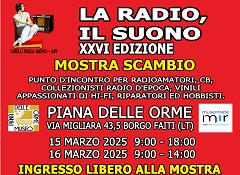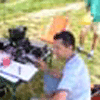QRM and Frustration
(This article is drawn from parts of the DX University presentation at Visalia in April, 2015.)
DXpeditions have always had some form of on-the-air difficulty in conducting their operations. In the early days, there were many fewer DXers, and the QRM potential was less. But, there were always DXers disgruntled by their inability to make a QSO who would transmit on the DX frequency. But, recent DXpeditions have been increasingly plagued by QRM, inadvertent and intentional.
Inadvertent QRM falls into several categories: Ignorance or IQRM, Unnecessary or UQRM, and Created or CQRM. A forth type of QRM is not inadvertent, it is Deliberate — DQRM.
Ignorance IQRM or IQRM* stems from a lack of learning about standard, proven DXing procedures. To the extent that it affects us all, this type of QRM is primarily caused by the inability of would-be DXers to operate their radios properly. This results in transmissions on the DX frequency and the inevitable reactions from frustrated DXers.
Unnecessary or UQRM is usually attributable to the UP and Frequency police. This difficulty appears to be exacerbated by the unnecessarily complex frequency controls of modern transceivers.
A third form of QRM is Created QRM or CQRM which is caused by DXpedition operators who don’t have the ability to control their pileups. (In some cases, CQRM can lead to intentional QRM.) The fundamental principle is that the nature of the pileup depends on how the pileup is conducted. It is likely that CQRM is the easiest QRM to control since it is relatively easy to guide a relatively small number of DXpeditioners.
Having defined several types of disruptive expedition-related QRM, what if anything can be done to rectify these situations? To help combat Ignorance QRM, the “DX Press” has been prolific. But one thing is becoming clear: More often than not we are “preaching to the choir.” We are NOT reaching the large percentage of casual “DXers.” They don’t read the literature, they don’t belong to DX clubs, and often they don’t know other experienced DXers. They have an interest in DX, and they start calling when they hear something interesting. We need to pay more attention to finding and working with more casual DXers.
The code is another situation. With the advent of no-code licenses, we have many new hams who want to work CW, but haven’t yet put in the time to learn it effectively. Thanks to the industry code readers are prevalent. Some DXers wish that these people would stay on SSB and RTTY, but is that what we really want?
Unnecessary QRM can be minimized by better educating DXers in the operation of their radios. In addition, frequency control in radios currently available is far more complicated than necessary and should be simplified. Transmitting on the DXpedition frequency was seldom a problem with separate transmitters and receivers.
In the case of Created QRM, QRM created by DXpedition operator’s style, more attention by DXpedition managers to procedure would prove helpful. Because there are relatively few DXpedition operators, it is easier to help these operators in using the best practices to manage their pileups than to attempt to educate thousands of DXers. If DXpedition operators consistently employ best practices, pileups will be more efficient and more fun. Following the suggested Best Practices published by the DX University and by The DX Code of Conduct – for DXpeditioners can help.
In the case of CQRM, QRM created by DXpedition operator’s style, more attention to procedure by DXpedition managers could prove useful. Following the suggested Best Practices published by the DX University and by The DX Code of Conduct – for DXpeditioners can help.
Intentional QRM is entirely another matter. DQRM is usually generated by discontented operators who wish to retaliate in some way for some reason. Perhaps some of these operators haven’t made their desired QSOs for reasons they deem beyond their control. Some of these QRMers are not DXers at all, and have had their net QSOs disrupted by DXpedition activity.
Some DQRM results from adverse, real-time interaction between DXers and other, pre-existing Amateur Radio activities. For example, DXers in pileups aren’t well known for listening to their transmitting frequencies before transmitting. DXpedition operators aren’t known for listening to their pileup frequencies, either. Opening an expedition on a narrow WARC band without a full complement of stations isn’t the best idea, but it happens. Covering certain nets and mode frequencies isn’t wise either. Some of the QRM and DQRM is caused by the operating style of the DXpedition operator; frustration experienced by DXers can lead to DQRM.
When a major DXpedition in on the air, there is much additional friction ready to be exploited. Better operating on both sides of the pileup is necessary. Putting our educational resources where they will do the most good is essential. The DX University is working in this area. If you have additional ideas, please write.
– N7NG
*The terms UQRM, IQRM, CQRM and DQRM used in this article are attributed to Chris Duckling, G3SVL.
https://n7ng.wordpress.com/
DXpeditions have always had some form of on-the-air difficulty in conducting their operations. In the early days, there were many fewer DXers, and the QRM potential was less. But, there were always DXers disgruntled by their inability to make a QSO who would transmit on the DX frequency. But, recent DXpeditions have been increasingly plagued by QRM, inadvertent and intentional.
Inadvertent QRM falls into several categories: Ignorance or IQRM, Unnecessary or UQRM, and Created or CQRM. A forth type of QRM is not inadvertent, it is Deliberate — DQRM.
Ignorance IQRM or IQRM* stems from a lack of learning about standard, proven DXing procedures. To the extent that it affects us all, this type of QRM is primarily caused by the inability of would-be DXers to operate their radios properly. This results in transmissions on the DX frequency and the inevitable reactions from frustrated DXers.
Unnecessary or UQRM is usually attributable to the UP and Frequency police. This difficulty appears to be exacerbated by the unnecessarily complex frequency controls of modern transceivers.
A third form of QRM is Created QRM or CQRM which is caused by DXpedition operators who don’t have the ability to control their pileups. (In some cases, CQRM can lead to intentional QRM.) The fundamental principle is that the nature of the pileup depends on how the pileup is conducted. It is likely that CQRM is the easiest QRM to control since it is relatively easy to guide a relatively small number of DXpeditioners.
Having defined several types of disruptive expedition-related QRM, what if anything can be done to rectify these situations? To help combat Ignorance QRM, the “DX Press” has been prolific. But one thing is becoming clear: More often than not we are “preaching to the choir.” We are NOT reaching the large percentage of casual “DXers.” They don’t read the literature, they don’t belong to DX clubs, and often they don’t know other experienced DXers. They have an interest in DX, and they start calling when they hear something interesting. We need to pay more attention to finding and working with more casual DXers.
The code is another situation. With the advent of no-code licenses, we have many new hams who want to work CW, but haven’t yet put in the time to learn it effectively. Thanks to the industry code readers are prevalent. Some DXers wish that these people would stay on SSB and RTTY, but is that what we really want?
Unnecessary QRM can be minimized by better educating DXers in the operation of their radios. In addition, frequency control in radios currently available is far more complicated than necessary and should be simplified. Transmitting on the DXpedition frequency was seldom a problem with separate transmitters and receivers.
In the case of Created QRM, QRM created by DXpedition operator’s style, more attention by DXpedition managers to procedure would prove helpful. Because there are relatively few DXpedition operators, it is easier to help these operators in using the best practices to manage their pileups than to attempt to educate thousands of DXers. If DXpedition operators consistently employ best practices, pileups will be more efficient and more fun. Following the suggested Best Practices published by the DX University and by The DX Code of Conduct – for DXpeditioners can help.
In the case of CQRM, QRM created by DXpedition operator’s style, more attention to procedure by DXpedition managers could prove useful. Following the suggested Best Practices published by the DX University and by The DX Code of Conduct – for DXpeditioners can help.
Intentional QRM is entirely another matter. DQRM is usually generated by discontented operators who wish to retaliate in some way for some reason. Perhaps some of these operators haven’t made their desired QSOs for reasons they deem beyond their control. Some of these QRMers are not DXers at all, and have had their net QSOs disrupted by DXpedition activity.
Some DQRM results from adverse, real-time interaction between DXers and other, pre-existing Amateur Radio activities. For example, DXers in pileups aren’t well known for listening to their transmitting frequencies before transmitting. DXpedition operators aren’t known for listening to their pileup frequencies, either. Opening an expedition on a narrow WARC band without a full complement of stations isn’t the best idea, but it happens. Covering certain nets and mode frequencies isn’t wise either. Some of the QRM and DQRM is caused by the operating style of the DXpedition operator; frustration experienced by DXers can lead to DQRM.
When a major DXpedition in on the air, there is much additional friction ready to be exploited. Better operating on both sides of the pileup is necessary. Putting our educational resources where they will do the most good is essential. The DX University is working in this area. If you have additional ideas, please write.
– N7NG
*The terms UQRM, IQRM, CQRM and DQRM used in this article are attributed to Chris Duckling, G3SVL.
https://n7ng.wordpress.com/











